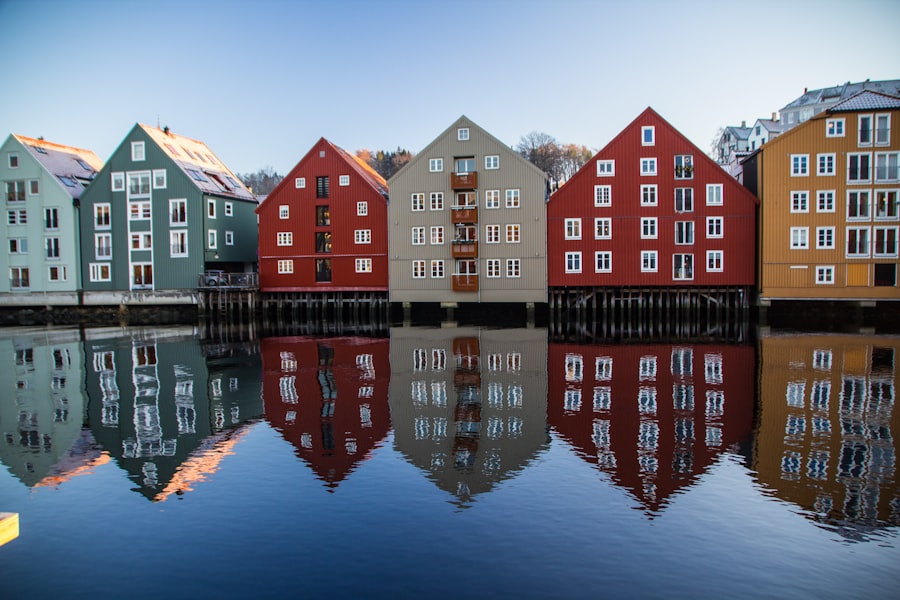Norway, a land of stunning fjords and majestic mountains, is equally rich in cultural heritage and traditions. The Norwegian calendar is peppered with holidays that reflect the country’s history, values, and the changing seasons. From the vibrant celebrations of the 17th of May to the serene festivities of Christmas and the joyous observance of Easter, each occasion is steeped in unique customs that bring families and communities together.
These holidays not only mark significant events in the national calendar but also serve as a reminder of Norway’s deep-rooted traditions and the importance of family and community. The essence of Norwegian holidays lies in their ability to foster a sense of belonging and unity among people. Each celebration is an opportunity for Norwegians to connect with their heritage, share stories, and partake in age-old customs that have been passed down through generations.
As visitors explore Norway during these festive times, they are often welcomed into the heart of Norwegian culture, experiencing firsthand the warmth and joy that these occasions bring to the lives of the people. Book your 1-hour strategy session with Norway Relocation Group today.
Summary
- Norwegian holidays and traditions are deeply rooted in the country’s culture and history, with a strong emphasis on family and community.
- The 17th of May is Norway’s Constitution Day and is celebrated with parades, flags, and traditional costumes called bunads, symbolizing national pride and unity.
- Norwegians celebrate Christmas with a focus on togetherness, traditional foods, and the lighting of advent candles.
- Traditional Norwegian Christmas foods include lutefisk, pinnekjøtt, and multekrem, accompanied by festive drinks like gløgg and aquavit.
- Easter in Norway is a time for outdoor activities, skiing, and enjoying unique treats like Kvikk Lunsj and oranges, with a strong emphasis on the religious significance of the holiday.
The Significance of the 17th of May in Norway
The 17th of May, known as Syttende Mai, is perhaps the most significant day in Norway’s national calendar. It commemorates the signing of the Constitution in 1814, marking Norway’s declaration of independence from Denmark. This day is not merely a historical event; it embodies the spirit of freedom and democracy that Norwegians hold dear.
The celebrations are a vibrant display of national pride, with citizens donning traditional attire, waving flags, and participating in parades that fill the streets with colour and life. On this day, children play a central role in the festivities. Schools across the country organise parades where children march proudly, singing songs and waving flags.
The atmosphere is electric, filled with laughter and joy as families gather to celebrate their shared heritage. The 17th of May is a day when Norwegians come together, regardless of their background, to honour their nation’s history and express their love for their homeland.
How Norwegians Celebrate Christmas

Christmas in Norway is a time of deep-rooted traditions and cherished family gatherings. The festive season typically begins with Advent, where families light candles each Sunday leading up to Christmas Day. This period is marked by anticipation and preparation, as homes are adorned with decorations that reflect the spirit of the season.
Norwegians often embrace a blend of Christian customs and ancient pagan traditions, creating a unique tapestry of celebration that is both spiritual and joyful. On Christmas Eve, families gather for a festive meal that often includes traditional dishes such as ribbe (pork ribs) or pinnekjøtt (dried lamb ribs). After dinner, it is customary to exchange gifts, a moment filled with excitement and joy for both young and old.
The evening culminates in the singing of carols and perhaps a visit from Santa Claus, known as “Julenissen,” who brings gifts for children. This blend of family bonding, culinary delights, and festive cheer makes Christmas a truly special time in Norway.
Traditional Norwegian Christmas Foods and Drinks
Norwegian Christmas cuisine is a delightful reflection of the country’s agricultural heritage and regional diversity. Traditional dishes vary from one region to another but often include hearty fare designed to warm the body during the cold winter months. Ribbe, or roasted pork belly, is a staple at many Christmas tables, served alongside sauerkraut and potatoes.
Another popular dish is pinnekjøtt, which consists of salted and dried lamb ribs that are steamed over birch branches, imparting a unique flavour. In addition to these main courses, desserts play an essential role in Norwegian Christmas celebrations. Kransekake, a towering cake made from almond paste, is often served at festive gatherings, while riskrem—a rice pudding topped with raspberry sauce—has become a beloved treat during this season.
To wash it all down, Norwegians enjoy gløgg, a spiced mulled wine that warms the heart and adds to the festive atmosphere. These culinary traditions not only nourish the body but also create lasting memories shared around the dinner table.
Easter Traditions in Norway
Easter in Norway is celebrated with a unique blend of religious observance and cultural customs that reflect the arrival of spring. The holiday begins with Palm Sunday, marking the start of Holy Week, leading up to Easter Sunday. One distinctive aspect of Norwegian Easter is the tradition of “påskekrim,” or Easter crime stories.
During this time, Norwegians indulge in reading crime novels or watching mystery shows, creating an intriguing twist on traditional holiday activities. As part of their Easter celebrations, many Norwegians also take to the outdoors during this time. The long winter months give way to brighter days, prompting families to engage in outdoor activities such as skiing or hiking.
This connection with nature is an integral part of Norwegian culture, allowing people to appreciate the beauty of their surroundings while celebrating the resurrection of spring.
The Importance of Easter in Norwegian Culture

Easter holds significant cultural importance in Norway beyond its religious connotations. It represents renewal and rebirth, themes that resonate deeply within Norwegian society as they emerge from the long winter months into the vibrant colours of spring. This period is not only about spiritual reflection but also about reconnecting with family and nature.
Many Norwegians take time off work to spend quality moments with loved ones, reinforcing familial bonds that are central to their way of life. Moreover, Easter serves as an opportunity for communities to come together in celebration. Local events often include Easter markets where artisans showcase their crafts and traditional foods are shared among neighbours.
This sense of community spirit during Easter reflects Norway’s values of togetherness and mutual support, making it a cherished time for many.
Unique Norwegian Easter Foods and Treats
Norwegian Easter cuisine features an array of delightful treats that highlight seasonal ingredients and traditional recipes. One popular dish is lammefrikassé, a lamb stew that embodies the flavours of spring with fresh vegetables and herbs. This hearty meal is often enjoyed during family gatherings over the Easter weekend.
In addition to savoury dishes, sweet treats also play a significant role in Norwegian Easter celebrations. One beloved confection is “påskekylling,” or Easter chickens—small chocolate or marzipan figures shaped like chicks that delight children and adults alike. Another favourite is “kvikk lunsj,” a chocolate-covered wafer bar that many Norwegians enjoy while hiking or skiing during the holiday period.
These culinary delights not only satisfy cravings but also add an element of joy to the festivities.
Dressing Up for the 17th of May: Norwegian Bunad
One of the most striking aspects of the 17th of May celebrations is the traditional attire known as bunad. Each bunad is unique to specific regions in Norway, showcasing intricate designs that reflect local history and culture. Wearing a bunad on this day is not merely about aesthetics; it represents pride in one’s heritage and a connection to one’s roots.
The bunad is often adorned with beautiful embroidery and accessories that tell stories about family lineage and regional identity. As families gather for parades and festivities on Syttende Mai, the sight of colourful bunads creates a vibrant tapestry that celebrates Norway’s diversity while uniting its people under a shared national identity.
Norwegian Christmas Markets and Festivities
During the Christmas season, Norwegian cities come alive with festive markets that capture the spirit of holiday cheer. These markets are filled with stalls offering handcrafted goods, traditional foods, and warm beverages that invite visitors to immerse themselves in the festive atmosphere. Oslo’s Christmas market at Spikersuppa is particularly popular, featuring twinkling lights, live music, and an array of local crafts.
The markets not only provide an opportunity for shopping but also serve as gathering places for friends and families to enjoy seasonal treats such as gingerbread cookies and mulled wine. The sense of community fostered at these markets reflects Norway’s commitment to preserving traditions while embracing modernity during this joyous time.
Family Gatherings and Activities on the 17th of May, Christmas, and Easter
Family gatherings are at the heart of Norwegian holiday celebrations, whether it be on Syttende Mai, Christmas or Easter. These occasions provide an opportunity for relatives to come together from near and far to share meals, stories, and laughter. On the 17th of May, families often host picnics or barbecues after participating in parades, creating lasting memories against a backdrop of national pride.
During Christmas, family traditions take centre stage as loved ones gather around tables laden with festive foods. The act of preparing meals together fosters connections between generations as recipes are passed down through time-honoured practices. Similarly, Easter brings families outdoors for activities such as skiing or hiking while enjoying each other’s company amidst nature’s beauty.
How to Experience Norwegian Holidays and Traditions as a Visitor
For those wishing to experience Norwegian holidays firsthand, there are numerous ways to immerse oneself in these rich traditions. Visiting during Syttende Mai offers an unparalleled opportunity to witness parades filled with colourful bunads while enjoying local delicacies at street vendors’ stalls. Engaging with locals during these celebrations can provide insights into their customs and values.
Christmas markets present another fantastic avenue for visitors to experience Norwegian culture during the festive season. Sampling traditional foods while browsing handcrafted goods allows one to appreciate both culinary delights and artistic craftsmanship unique to Norway. Additionally, participating in local Easter activities such as skiing or attending community events can deepen one’s understanding of how Norwegians celebrate this important holiday.
To navigate these experiences seamlessly, consider reaching out to organisations like the Norway Relocation Group. They offer invaluable assistance for those looking to explore Norway’s rich cultural landscape while ensuring you have access to local insights that enhance your journey through these vibrant celebrations. Whether you’re relocating or simply visiting for a holiday experience, their expertise can help you connect more deeply with Norway’s traditions and communities.
In conclusion, Norwegian holidays are not just dates on a calendar; they are vibrant expressions of culture that bring people together in celebration of their shared heritage. From the spirited parades on Syttende Mai to the warmth of family gatherings during Christmas and Easter, each occasion offers a glimpse into what it means to be part of this beautiful country. Embracing these traditions allows both locals and visitors alike to forge connections that transcend borders—an experience made even richer through organisations like the Norway Relocation Group who facilitate deeper engagement with Norway’s cultural tapestry.
Book your 1-hour strategy session with Norway Relocation Group today

